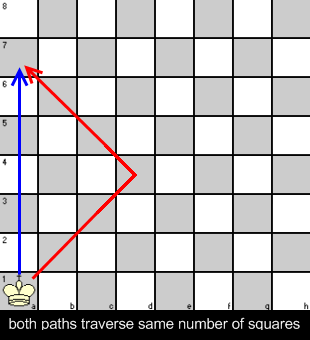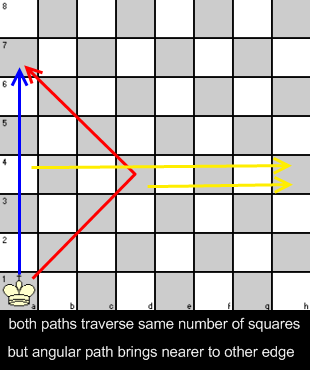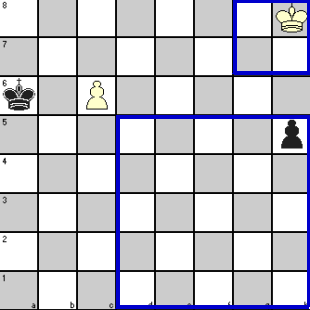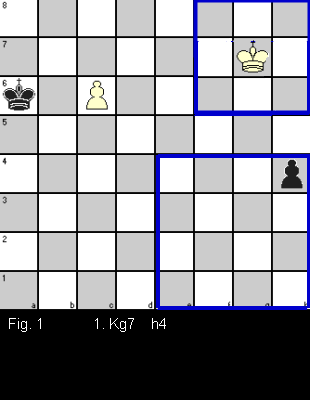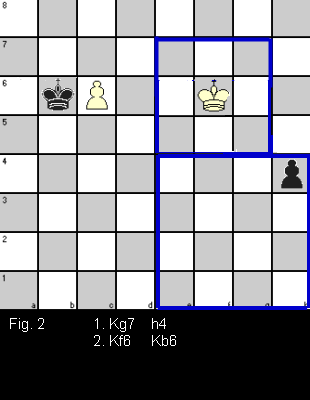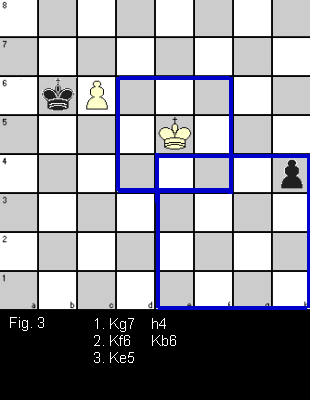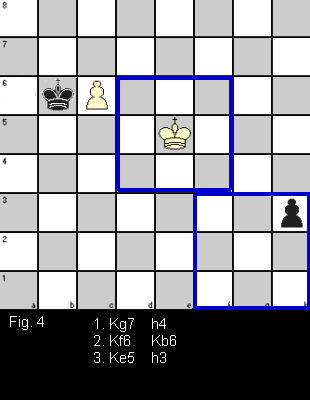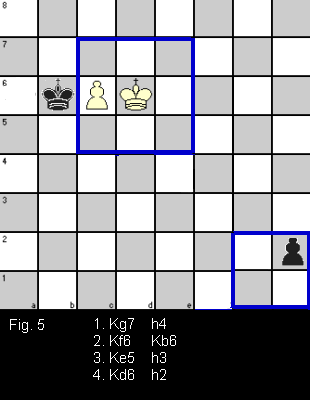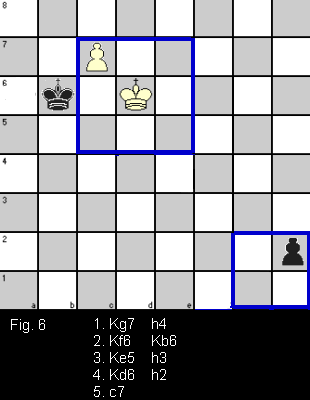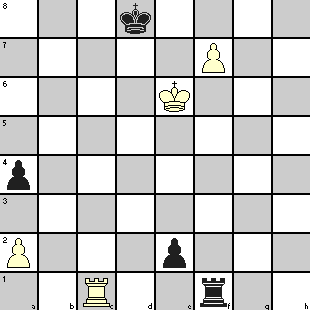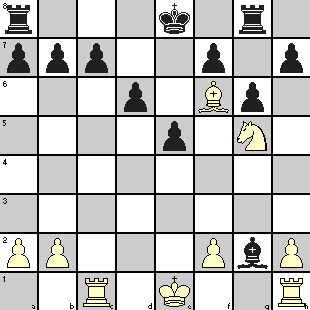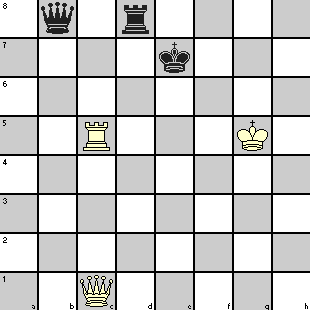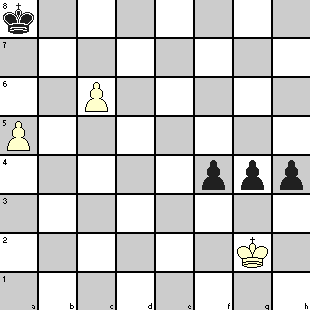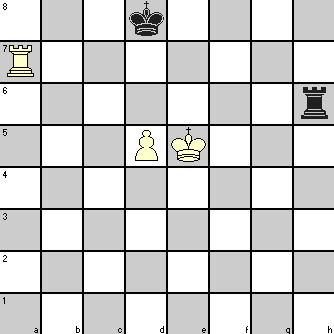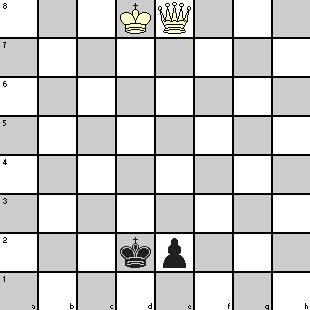
White to play and win.
We have started with White King and Queen quite far removed from Black’s King and Pawn though in actual such situations they may be closer – but the tactics remain the same.
Let us see what strategy White must follow.
- Queen must keep Black King in check to stop the pawn promotion except in situation at 6.
- Primary aim is to capture the pawn after which checkmate is easy as it becomes a King and Queen vs. King endgame.
- Except for giving checks, Queen alone can achieve nothing. To capture the pawn, White King has to occupy one of the three squares on sixth rank that are in contact with the pawn.
- To move White King, Queen has to stop moving (i.e., giving check) and this is possible only if Black King can be made to block its own pawn.
- To force this on Black, the Queen must be able to give check from a square on Black’s sixth rank which is on a file next to the pawn’s file
- When the Black King moves to a square on 7th rank next to the pawn, Queen can take the square on the other side of the pawn.
- If the Queen gets an opportunity to move to the promotion square, the fight is over.
In the position shown, if the Queen can force the Black King to d1 or f1 square, then a check from d3 or f3 respectively will compel the King to move to e1 blocking the pawn. The White King can use this opportunity to advance one square and through this process reach d3 or e3 or f3 square after which the Queen can capture the pawn.
Black’s strategy is not to allow the Queen to move to e1 as that virtually ends the fight. His King should remain within one square of the pawn and avoid moving to e1 square if possible.. Even when it is forced to e1, it should go to f2 or d2 on next move depending on whether the Queen is on d3 or f3. If Black King goes to f1 or d1, the Queen will simply move to f3 or d3 to force the Black King back to e1 and the end will be faster!
Use the following to create a .pgn file and use a program like Winboard to play the moves.
1. Qd7+ Kc2 2. Qc6+ Kd2 3. Qd5+ Ke3 4. Qe5+ Kf2 5. Qf4+ Kg2 6. Qe3 Kf1 7. Qf3+ Ke1 8. Kd7 Kd2 9. Qf4+ Kd1 10. Qd4+ Kc2 11. Qe3 Kd1 12. Qd3+ Ke1 13. Kd6 Kf2 14. Qf5+ Ke3 15. Qg5+ Kd3 16. Qg3+ Kd2 17. Qf2 Kd1 18. Qd4+ Kc2 19. Qe3 Kd1 20. Qd3+ Ke1 21. Kd5 Kf2 22. Qd2 Kf1 23. Qf4+ Kg2 24. Qe3 Kf1 25. Qf3+ Ke1 26. Kd4 Kd2 27. Qd3+ Ke1 28. Ke3 Kf1 29. Qxe2+ 1-0
This technique does not work if the pawn is in bishop or rook file. With a bishop pawn, when the Queen checks Black King at b1 (or g1) from b3 (or g3) square, Black King will move to a1 (or h1) square, as the case may be. If the White King now tries to advance, the pawn gets promoted. The pawn can be left unprotected as it will be stalemate if the Queen captures the pawn!
If it is a rook pawn, Black will shuttle his King among squares a1-b1-b2 or h1-g1-g2. If the Queen delivers check from b3 (or g3), Black King goes to a1 (or h1). On check from c3 (or f3) square, Black King moves to b1 (or g1) so that no baseline check is possible from c1 (or f1) and for check from other baseline squares, the King moves to b2 (or g2). White Queen cannot go to b3 (or g3) with Black King at a1 (or h1) as it becomes a stalemate. So White King does not get any opportunity to advance.
But win is possible in these cases if the White King happens to be much nearer, within two steps of the Black King. The pawn can be allowed to Queen but taking advantage of this interval, the White Queen can deliver checkmate with support from the King. Try it out yourself keeping the strategy in mind.
